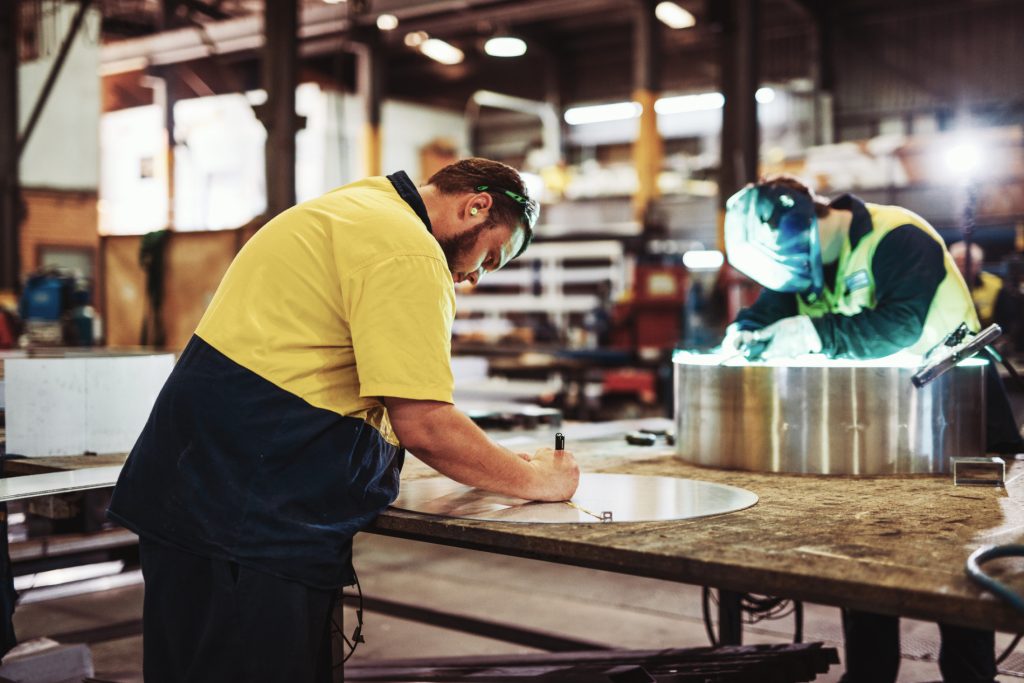Advice for Mothers Returning to work in 2023
Balancing motherhood and a career can be a daunting challenge for many women. With the cost-of-living crisis in Australia many women are faced with the prospect of returning to work. But if you’re a parent, you may be feeling torn between the demands of your growing children, the needs of ageing parents, the cost-of-living crisis…
Balancing motherhood and a career can be a daunting challenge for many women. With the cost-of-living crisis in Australia many women are faced with the prospect of returning to work. But if you’re a parent, you may be feeling torn between the demands of your growing children, the needs of ageing parents, the cost-of-living crisis and the pressure to succeed in your career.
We have created a step-by-step guide to help new parents return to work after having a child. From assessing childcare options to updating resumes and preparing for job interviews, our guide covers everything needed to re-enter the workforce confidently.
Despite progress towards gender equality in the workforce, women continue to face significant obstacles, with lower participation rates and reduced earning potential compared to their male counterparts. It’s a situation that’s becoming increasingly common, especially among women who are more likely to work part-time and earn less than their male counterparts. A report by The Australian Government on the Status Of Women for International Women’s Day in 2023 revealed that women’s earnings can drop by 55% in the first five years of parenthood, while men’s remain the same. But it’s not just about the financial impact – there’s the emotional toll of balancing competing demands, too. So how can you set yourself up for success while still being there for your family?
While there is a growing awareness of the unpaid work and care that women do, the reality is that women still bear the brunt of household and family responsibilities. With the demands of unpaid work and care falling disproportionately on women, the juggle is real. Recent research shows that women spend over nine hours more per week on unpaid work and care than men, with women taking on the lion’s share of housework, even when they are the primary breadwinner. The mental load of coordinating activities and planning for children also falls heavily on women, adding to the already significant burden. But despite these challenges, mothers are increasingly returning to work, determined to make a success of both their career and family life.
Let’s Talk Facts!
According to The Australian Government on the Status Of Women for International Women’s Day in 2023
Women are less likely to participate in the workforce (62.1%) than men (71.0%), and more likely to work part-time (42.9%) than men (18.8%).
Women of all ages spend over 9 hours a week more than men on unpaid work and care (31.6 hours for women compared to 22.4 hours for men). [45]
Women do more unpaid housework than men even when they are the primary breadwinner (24.1 hours for women compared to 19.1 hours for men, a gap of 5 hours). [46]
Women take on the mental load of planning and coordinating activities for children in 78% of families, despite only being the primary carer in 52% of families.
Women approaching retirement have 23.1% less superannuation than men of the same age.
A study by Deloitte’s Women @ Work: A Global Outlook 2023 highlighted the stark reality for women around the world, revealing that women continue to bear the greatest responsibility for household tasks, often prioritising their partner’s career over their own. The survey also found that lack of flexibility around working hours is a top cited reason for leaving jobs, with many women feeling uncomfortable taking advantage of flexible working opportunities. Yet, those with higher flexibility around where and when they work report higher productivity and loyalty to their employers. The burden of domestic work also falls heavily on women, with almost half of the women who live with a partner and have children reporting that they do most of the childcare. Only 11% of women in a relationship say they are the primary earner, with many feeling the need to prioritise their partner’s career over their own. This creates a vicious cycle where women’s chances of earning more are diminished. As a result, many women report higher stress levels, burnout, and poor mental health, with only a minority feeling comfortable talking about these concerns in the workplace.
Our Advice
Balancing motherhood with a thriving career is a challenge that many working mothers face every day. At Fuse, we’re committed to supporting our employees and fostering a work culture that empowers working mothers to succeed. With this in mind, we reached out to some of our working mothers at Fuse to get their insights and advice on how they manage to juggle both motherhood and their careers.
Melissa Kennedy, mum of three and the National Manager of Manufacturing at Fuse says:
“Stop feeling guilty! When you are working you feel guilty because you are not with your child/children. When you are with the kids you feel guilty that you are not working. You can have everything but sometimes not everything all at the same time. Build a strong network of people around you to help you. Work/life balance is so different for everyone so work out the best balance for you and your family and try to make it happen.”
Madeleine Martin, mum of two ad the National Manager of Insurance and Wealth Management says:
“Continue to pursue your career goals and don’t accept that your aspirations need to take a backseat until you can work full time again. Work with your employer to negotiate a schedule that works for both of you and then continue to set achievable career goals. Juggling motherhood and work is a delicate balance but with the right support, the two can live in harmony!”
Tegan Williams, mum of two and a senior recruitment consultant in our Insurance and Wealth team says:
“When you are a parent, life becomes very ad hoc! Keep yourself flexible, change your work arrangements as you need and keep open communication with your workplace. Keep yourself healthy and balanced so you can look after your family as well as be successful at work. Discover how you can best contribute for where you are at in life!”
Renee Skipper, mum of one and an account manager at Fuse says:
“Being a working mother is a WILD ride!! Full of ups and downs, achievements, guilt and lots of love.
My tips would include, use a family organiser/set up a weekly routine for mundane tasks, leave work at work! Spend your time wisely, ensure you choose an employer who understands that being a mother will always come firstmother will always come first, stop trying to be perfect, ensure you fill up your own cup/self care and stay connected to your kids.”
Sarah Francis, mum of one and an account manager at Fuse Recruitment says:
“Ask for help if you need it, be kind to yourself and try to eat well and sleep as much as you can! Both work and mumming can be stressful and tiring and you need energy”
Thinking of returning to work? Here’s our step by step guide
We understand that the transition back into the workforce after maternity leave may be daunting, so we have put together a step-by-step guide to help you make the transition as smooth as possible.
1. Assess your career goals
Assessing career goals is important for mothers re-entering the workforce as it helps to make informed decisions, focus job search efforts, and feel confident and empowered during the transition. By evaluating what you want to achieve, what type of work you enjoy, and what skills you want to develop, you can find a job that aligns with your new goals and values.
2. Update your resume and cover letter
Updating your resume and developing a cover letter is essential for successfully re-entering the workforce. These documents serve as a summary of your skills, experience, and achievements, highlighting your strengths and abilities to potential employers. By updating your resume, you can showcase any new skills or experiences you may have gained while you were away from work. A well-written cover letter can also help explain your situation, show your enthusiasm for the position, and demonstrate how you can contribute to the company.
3. Research job opportunities
Researching job opportunities is a critical step for mothers returning to the workforce after maternity leave. By thoroughly exploring different job options, you can identify positions that align with your career goals and personal aspirations. Additionally, conducting research can help you make informed decisions and avoid wasting time applying for jobs that aren’t a good fit for your skills, interests, and experience. To conduct effective job research, consider using a variety of resources, such as job search engines, career websites, and professional networks. This will increase your chances of finding the right job and successfully re-entering the workforce.
4 . Use a recruitment agency
Recruitment agencies understand that mothers may have gaps in their work experience due to taking time off for maternity leave. They can help mothers highlight the skills and experiences gained during this time and showcase how these can be valuable to potential employers. Recruitment agencies have access to a wide range of job opportunities, including those that may not be advertised elsewhere. They can match mothers with positions that align with their skills, interests, and experience, and help negotiate flexible work arrangements if needed.
5. Prepare for interviews
Returning to work after maternity leave can be daunting, particularly if mothers have gaps in their employment history. That’s why it’s essential for mothers to prepare for interviews to showcase their skills, achievements, and ability to balance work and family responsibilities. By preparing for interviews, mothers can effectively address any gaps in their resume and provide examples of how they’ve continued to develop their skills while on leave. This not only helps build confidence but also highlights the value that they can bring to potential employers.
6. Consider flexible work options
Mothers returning to the workforce after maternity leave can benefit greatly from considering part-time or flexible work arrangements. By working fewer hours or having a flexible schedule, mothers can balance their work and family responsibilities more effectively, resulting in less stress and more productivity. With more and more companies offering flexible work arrangements, there are more opportunities to find a job that works for both you and your family.
7. Network
Networking can be helpful for mothers returning to the workforce by providing access to job opportunities that are not advertised publicly. It also enables them to learn new skills, gain knowledge, and build a support system. By connecting with people in their professional network, mothers can expand their job search and discover opportunities they might have missed through traditional job search methods.
8. Take a refresher course
As a mother returning to the workforce, taking a refresher course can be an excellent way to update your skills and knowledge, making you more competitive in the job market. By identifying specific areas where you need to improve your skills or knowledge to be successful in your desired field, a refresher course can help bridge these skill gaps and make you feel more confident in your abilities. This can be especially valuable for mothers who have been out of the workforce for a period of time and want to ensure they are up to date with the latest industry trends and technologies.
9. Seek support
Support can come in different forms and can help with various challenges. For example, finding reliable and affordable childcare can be a major challenge, so seeking support from family, friends, or professional caregivers can help ease this burden. Emotional support from family, friends, or support groups can help to manage stress and feelings of overwhelm during the transition back to work. Career guidance from mentors or coaches can also assist in identifying career goals and navigating the job search process.
10. Stay positive
Staying positive is important. The transition back to work can be challenging, and it’s common to experience feelings of guilt or anxiety about leaving their children. However, maintaining a positive attitude and mindset can help mothers stay motivated and focused on their goals. By staying positive, mothers can also project confidence and professionalism during job interviews and in the workplace, which can help them secure job opportunities and build strong professional relationships.
Returning to the workforce as a mother can be a difficult balancing act, but with the right support and mindset, it can also be incredibly rewarding. To make this transition smoother, it is important to remember to not feel guilty about working and not being with your children. You can have both and you don’t need to do it all. It is also helpful to build a strong support network of people around you who can help you balance work and family responsibilities. Remember that work-life balance looks different for everyone, so it is important to determine what balance works best for you and your family and try to make it happen.
As a parent, life can become very unpredictable, so it is important to keep yourself flexible and communicate openly with your workplace about your needs. Prioritise your health and wellness to ensure that you can care for your family and be successful at work. If you need help, don’t be afraid to ask for it. And as simple as it may seem, being kind to yourself, eating well, and getting plenty of rest to stay energised and tackle the challenges of both work and motherhood. At Fuse, we are committed to supporting our employees and fostering a work culture that empowers working mothers to succeed.







